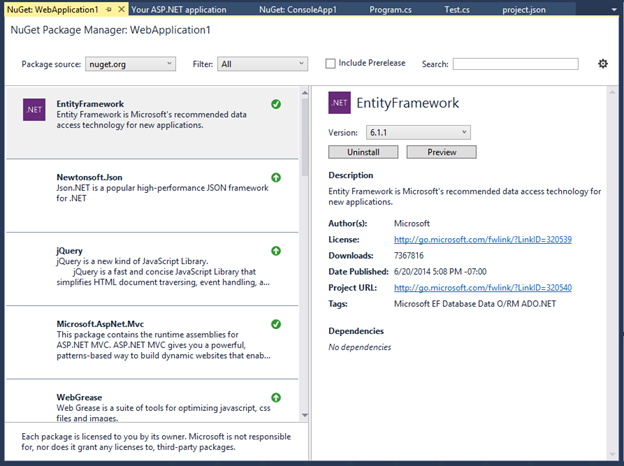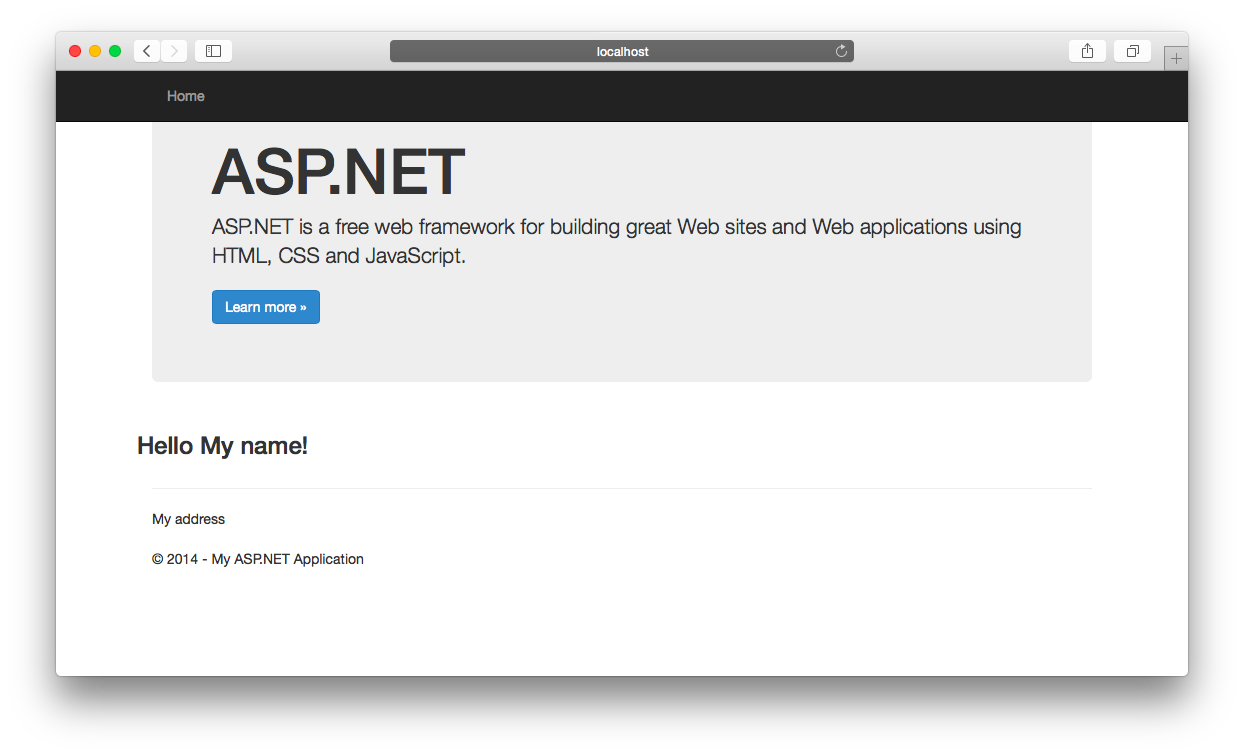Today's Visual Studio Connect() event brought a huge amount of announcements. From open sourcing .NET, delivering an officially supported runtime to Linux & Mac OS X [http://blogs.msdn.com/b/somasegar/archive/2014/11/12/opening-up-visual-studio-and-net-to-every-developer-any-application-net-server-core-open-source-and-cross-platform-visual-studio-community-2013-and-preview-of-visual-studio-2015-and-net-2015.aspx] , [http://blogs.msdn.com/b/somasegar/archive/2014/11/12/
Development
32 posts
I am preparing for a talk I am about to give very soon (more to follow), and I wanted to demo some of the new features of ASP.NET MVC 6 on a Mac. It took reading instructions on multiple sites to get this to work, so I wanted to
A lot of developers use ASP.NET MVC [http://www.asp.net/mvc/]. But interestingly enough, the pattern behind it, is often a mystery. Why is it called MVC? What does it actually solve? And how does it relate to patterns like MVVM, etc. Let's explore. A pattern
... but I'm currently working on a post about authentication.
About a month ago, I left my position as a Senior Software Engineer [http://en.wikipedia.org/wiki/Software_engineering] / Architect. I held that position for about three years. I think these three years were some of the most productive years, in terms of learning, productivity itself, communication skills... While
http://www.amazon.com/The-Startup-Owners-Manual-Step-By-Step/dp/0984999302
When running web applications [http://en.wikipedia.org/wiki/Web_application], you typically want to inform the user of results - success or failure of their actions. This involves failures to login, error messages [http://en.wikipedia.org/wiki/Error_message], completion results and many other stuff the application needs


